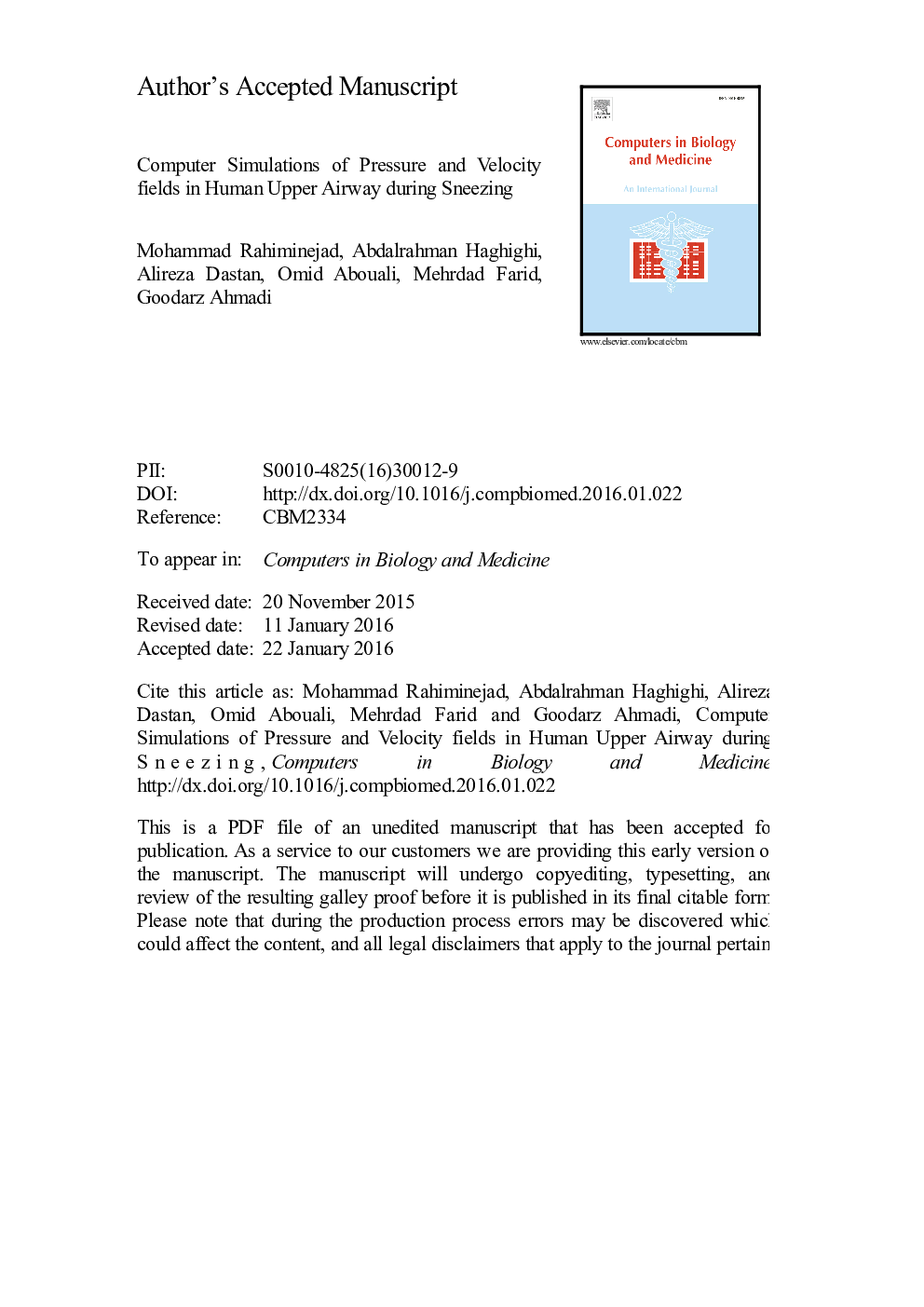| Article ID | Journal | Published Year | Pages | File Type |
|---|---|---|---|---|
| 6920871 | Computers in Biology and Medicine | 2016 | 44 Pages |
Abstract
In this paper, the airflow field including the velocity, pressure and turbulence intensity distributions during sneezing of a female subject was simulated using a computational fluid dynamics model of realistic upper airways including both oral and nasal cavities. The effects of variation of reaction of the subject during sneezing were also investigated. That is, the impacts of holding the nose or closing the mouth during sneezing on the pressure and velocity distributions were studied. Few works have studied the sneeze and therefore different aspects of this phenomenon have remained unknown. To cover more possibilities about the inlet condition of trachea in different sneeze scenarios, it was assumed that the suppressed sneeze happens with either the same inlet pressure or the same flow rate as the normal sneeze. The simulation results showed that during a normal sneeze, the pressure in the trachea reaches about 7000Â Pa, which is much higher than the pressure level of about 200Â Pa during the high activity exhalation. In addition, the results showed that, suppressing the sneeze by holding the nose or mouth leads to a noticeable increase in pressure difference in the tract. This increase was about 5 to 24 times of that during a normal sneeze. This significant rise in the pressure can justify some reported damage due to suppressing a sneeze.
Keywords
Related Topics
Physical Sciences and Engineering
Computer Science
Computer Science Applications
Authors
Mohammad Rahiminejad, Abdalrahman Haghighi, Alireza Dastan, Omid Abouali, Mehrdad Farid, Goodarz Ahmadi,
